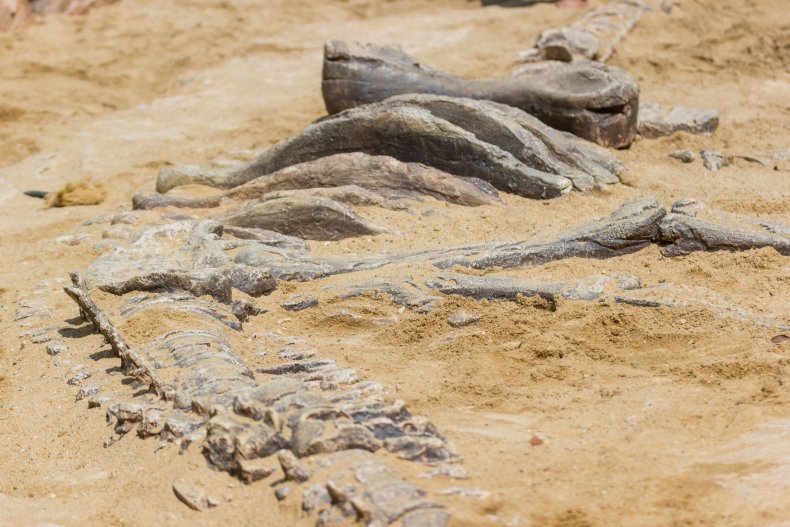Researchers discovered the remains of a new species of dinosaur, which lived 85 million years ago in what is now Mexico’s Coahuila state.
A team of paleontologists from the Desert Museum in Coahuila found the dinosaur—which has been named Acantholipan gonzalezi—in the arid Ocampo region, Reuters reported.
The team has been analyzing the fossil for more than eight years and have now revealed that it represents a new genus, or group of species, of nodosauridae—a family of heavily armed dinosaurs, which roamed the Earth between the Late Jurassic period (roughly 163 to 145 million years ago) to the Late Cretaceous (around 100 to 66 million years ago).
Examinations of the fossil suggest the animal was a juvenile, but it was by no means small, measuring 11.4 feet in length and weighing more than half a ton. It was likely herbivorous and walked on all four limbs, according to a Reuters video report.
The fossils of A. gonzalezi differ from those of its close relatives—which include Nodosaurus and Niobrarasaurus—in a number of ways. For example, the ulna—a long bone found in the forearm—is larger than in other nodosaurs. Researchers said the specimen is the oldest dinosaur ever found in the region.

“There was no land in Coahuila. That is why we had not found any dinosaurs, from this period or before then,” Hector Rivera, a paleontologist from the museum, told reporters at a press conference. “It’s a marine animal. The obvious question is, how a terrestrial dinosaur was found on land that used to be a seabed.”
The dinosaur’s name derives from the Greek word “acanthos” meaning “spine” and “Lipan”—the name for an Apache people who inhabited region where the fossils were found.
Many dinosaur fossils are in Mexico, including those of animals such as Albertosaurus and Apatosaurus. The country is also notable for being the place where the asteroid that is thought to have wiped out the dinosaurs struck around 66 million years ago.